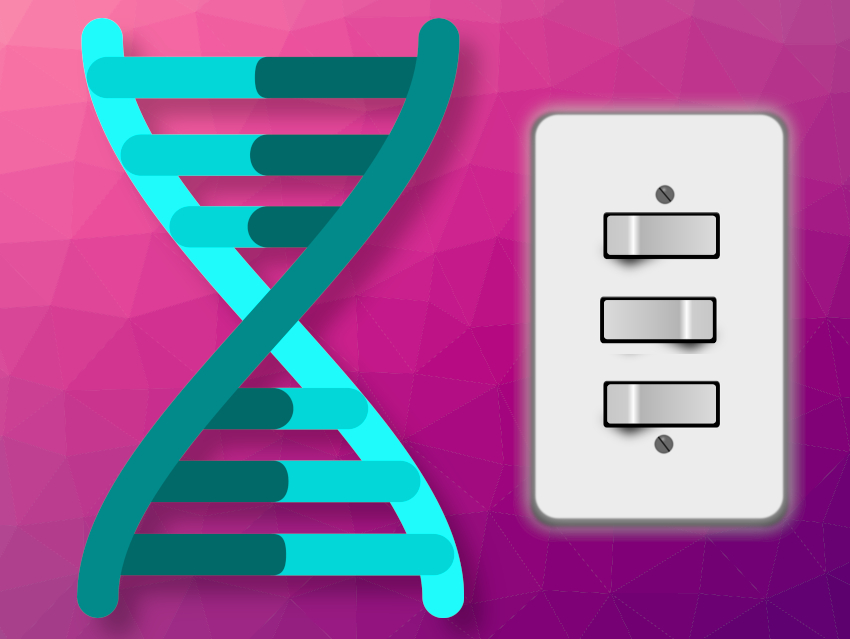The CRISPR/Cas9 system is a simple and effective method to alter gene sequences. It consists of two components, a Cas9 protein that acts as a pair of molecular “scissors” to cut the DNA, and a guide RNA that enables Cas9 to navigate to the target DNA. An entirely different, potentially reversible, approach to changing gene function is switching genes “off” or “on” instead of cutting them out and replacing them entirely. This relies on so-called epigenetics—i.e., heritable changes in gene expression that do not involve changes to the DNA sequence itself. Instead, the DNA strands are chemically modified, e.g., via methylations.
Luke A. Gilbert, University of California, San Francisco, USA, Jonathan S. Weissman, University of California, San Francisco, Howard Hughes Medical Institute, San Francisco, CA, USA, and Whitehead Institute for Biomedical Research, Massachusetts Institute of Technology (MIT), Cambridge, USA, and colleagues have developed a method called “CRISPRoff” that allows the team to turn down gene expression while leaving the sequence of the DNA unchanged.
The team created a single dead Cas9 fusion protein that, guided by small RNAs, can methylate specific spots on a DNA strand. These methylated genes are, thus, turned off. This methylation is highly specific. The complementary “CRISPRon” system, composed of a single guide RNA (sgRNA) and an MS2 coat protein, can be used to remove the DNA methylation and reverse the effects.
The researchers found that the method can target the majority of genes in the human genome, even regions of DNA that control gene expression themselves. CRISPRoff can also silence genes that do not have large methylated regions called CpG islands, which had previously been thought necessary for DNA methylation. To investigate the potential of CRISPRoff for practical applications, the team silenced a gene in a certain type of stem cell and then induced the cells to turn into neurons. The gene remained silenced in 90 % of the cells. This shows that cells retain modifications made by the CRISPRoff system even when they change cell type.
- Genome-wide programmable transcriptional memory by CRISPR-based epigenome editing,
James K. Nuñez, Jin Chen, Greg C. Pommier, J. Zachery Cogan, Joseph M. Replogle, Carmen Adriaens, Gokul N. Ramadoss, Quanming Shi, King L. Hung, Avi J. Samelson, Angela N. Pogson, James Y.S. Kim, Amanda Chung, Manuel D. Leonetti, Howard Y. Chang, Martin Kampmann, Bradley E. Bernstein, Volker Hovestadt, Luke A. Gilbert, Jonathan S. Weissman,
Cell 2021.
https://doi.org/10.1016/j.cell.2021.03.025




